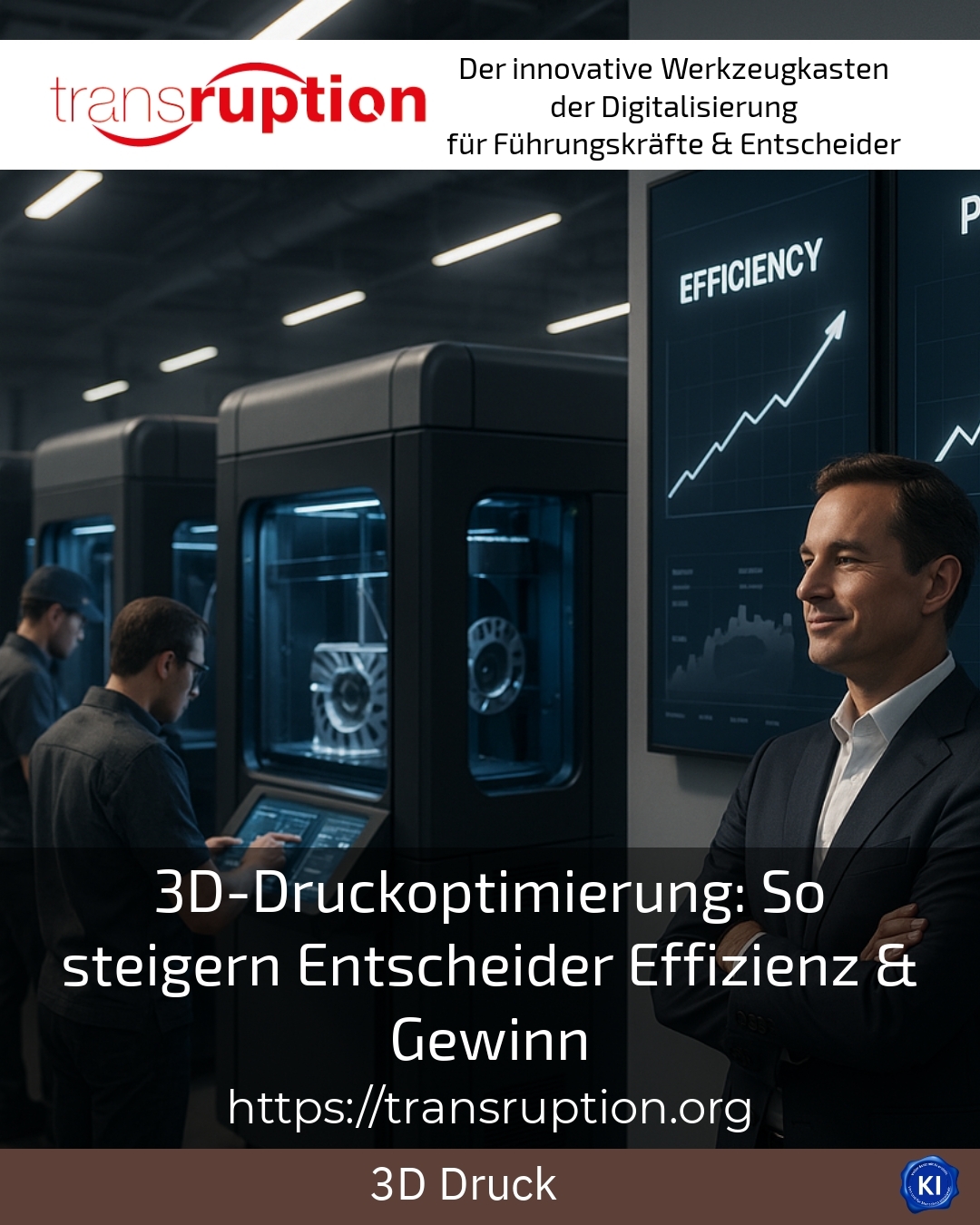More and more companies are recognising how transformative technologies are changing not just individual processes, but entire production strategies. In particular, 3D printing optimisation is the focus of decision-makers who value efficiency, cost-effectiveness and innovation. It is no longer just about the printing itself, but about a well thought-out interplay of materials, design, logistics and production - in short, about holistic 3D printing optimisation.
3D printing optimisation as a strategic lever
Those who optimise 3D printing in a targeted manner not only save costs, but also gain valuable time and increase the quality of the products. Many managers report that they achieve significant savings through targeted material reduction and weight minimisation without compromising stability[1][3]. This results in components that are lighter, require fewer raw materials and still fulfil all requirements.
One major advantage is flexibility: conventional manufacturing methods are often limited by rigid tools and machines. In contrast, 3D printing optimisation enables complex geometries that would be difficult or impossible to implement using conventional methods[1][4]. This design freedom inspires engineers and developers to create innovative solutions that drive the market forward.
Sustainability is another topic that comes up time and again in discussions with decision-makers. Through targeted material savings and reduced waste, companies are making an active contribution to environmental protection and strengthening their competitive position at the same time[1]. 3D printing optimisation thus becomes a driver for sustainable business.
Practical examples from the industry
Tool-free manufacturing processes are increasingly being used in mechanical engineering to efficiently produce prototypes and small batches. A medium-sized company from southern Germany reports that it has been able to reduce its development times by up to 70% by using 3D printing - and is therefore faster to market[10].
In the automotive industry, manufacturers are focussing on additively manufactured lightweight components that reduce the weight of vehicles and thus lower fuel consumption. Topology-optimised structures that only have material where it is actually needed are particularly in demand here[3].
Another example comes from the energy sector: in the XXL3D printing project, the material consumption for a large gearbox housing was reduced by around 36%. At the same time, 41% of energy was saved compared to traditional casting production - impressive proof of the potential of 3D printing optimisation[6].
Concrete steps to optimise 3D printing
To realise the full potential of additive manufacturing, it is not enough to simply purchase a printer. Decision-makers should take a systematic approach and critically scrutinise their processes. The following steps will help to sustainably increase efficiency and profits:
First of all, it is worth analysing your own components for optimisation potential. Software solutions such as Altair Inspire, Autodesk Fusion 360 or ANSYS help to develop load-optimised and material-saving designs[3]. These tools identify superfluous material areas and suggest optimised geometries that can be transferred directly to 3D printing.
Another lever is the integration of 3D printing into the supply of spare parts. Many SMEs report that they have been able to significantly reduce their inventory costs by producing spare parts on demand[10]. This strategy proves to be particularly valuable for older systems for which parts are no longer available.
It is also advisable to rethink the entire product development process. Iterative prototype development, early error detection and rapid adjustments to the digital model save time and resources[10][11]. Companies that utilise these possibilities are often more innovative and react more flexibly to market changes.
Action tips for decision-makers
- Start with a pilot project to gain experience and make the benefits of 3D printing optimisation tangible.
- Invest in training and qualifications so that your employees can use the new technologies competently.
- Use external consulting or transruption coaching to provide targeted support during the transformation process and recognise stumbling blocks at an early stage.
My analysis
3D printing optimisation is not a short-lived trend, but a central building block for future-proof production. Companies that use this technology strategically benefit from shorter time-to-market, reduced costs and greater innovative strength. Particularly in combination with digital tools and an open error culture, a tangible competitive advantage is created.
In practice, it has been shown time and again that those who dare to take the step towards 3D print optimisation not only gain efficiency, but also creative freedom and sustainability. Integration into existing processes works best when decision-makers show the courage to change and involve external expertise in a targeted manner - for example through transruption coaching, which accompanies the change and provides impetus.
Further links from the text above:
Topology optimisation for 3D printing - save costs and reduce development time [1]
Topology optimisation and 3D printing - how the perfect shape is created [3]
Researchers demonstrate efficient manufacturing method for marine gearbox housings [6]
3D printing in SMEs: from theory to practice [10]
Cost efficiency through 3D printing [2]
For more information and if you have any questions, please contact Contact us or read more blog posts on the topic TRANSRUPTION here.
















